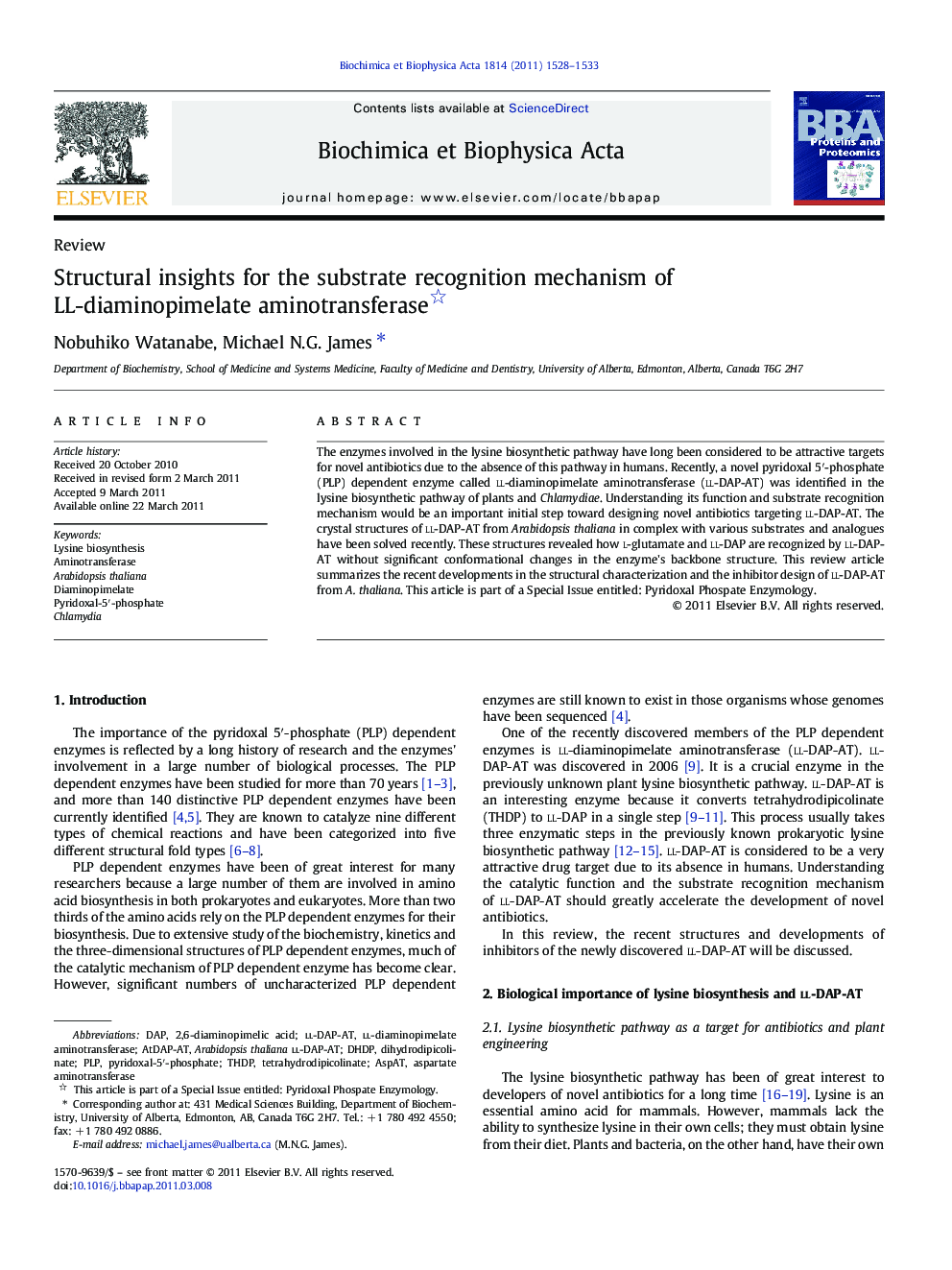| Article ID | Journal | Published Year | Pages | File Type |
|---|---|---|---|---|
| 1178017 | Biochimica et Biophysica Acta (BBA) - Proteins and Proteomics | 2011 | 6 Pages |
The enzymes involved in the lysine biosynthetic pathway have long been considered to be attractive targets for novel antibiotics due to the absence of this pathway in humans. Recently, a novel pyridoxal 5′-phosphate (PLP) dependent enzyme called ll-diaminopimelate aminotransferase (ll-DAP-AT) was identified in the lysine biosynthetic pathway of plants and Chlamydiae. Understanding its function and substrate recognition mechanism would be an important initial step toward designing novel antibiotics targeting ll-DAP-AT. The crystal structures of ll-DAP-AT from Arabidopsis thaliana in complex with various substrates and analogues have been solved recently. These structures revealed how l-glutamate and ll-DAP are recognized by ll-DAP-AT without significant conformational changes in the enzyme's backbone structure. This review article summarizes the recent developments in the structural characterization and the inhibitor design of ll-DAP-AT from A. thaliana. This article is part of a Special Issue entitled: Pyridoxal Phospate Enzymology.
► We reviewed the recent advances in ll-DAP-AT research. ► We summarized the recent structural work in ll-DAP-AT. ► We illustrated the substrate binding mode of ll-DAP-AT.
